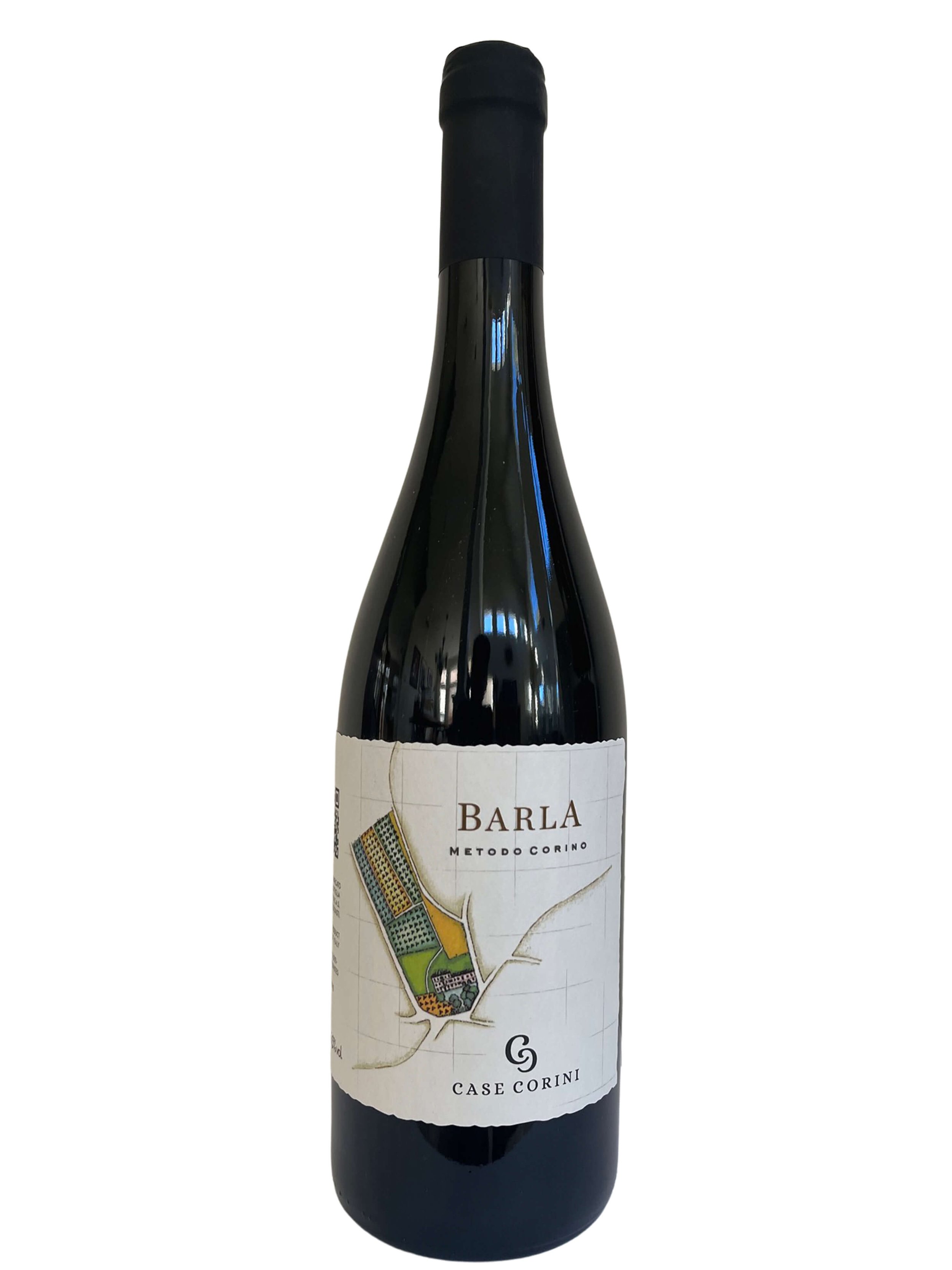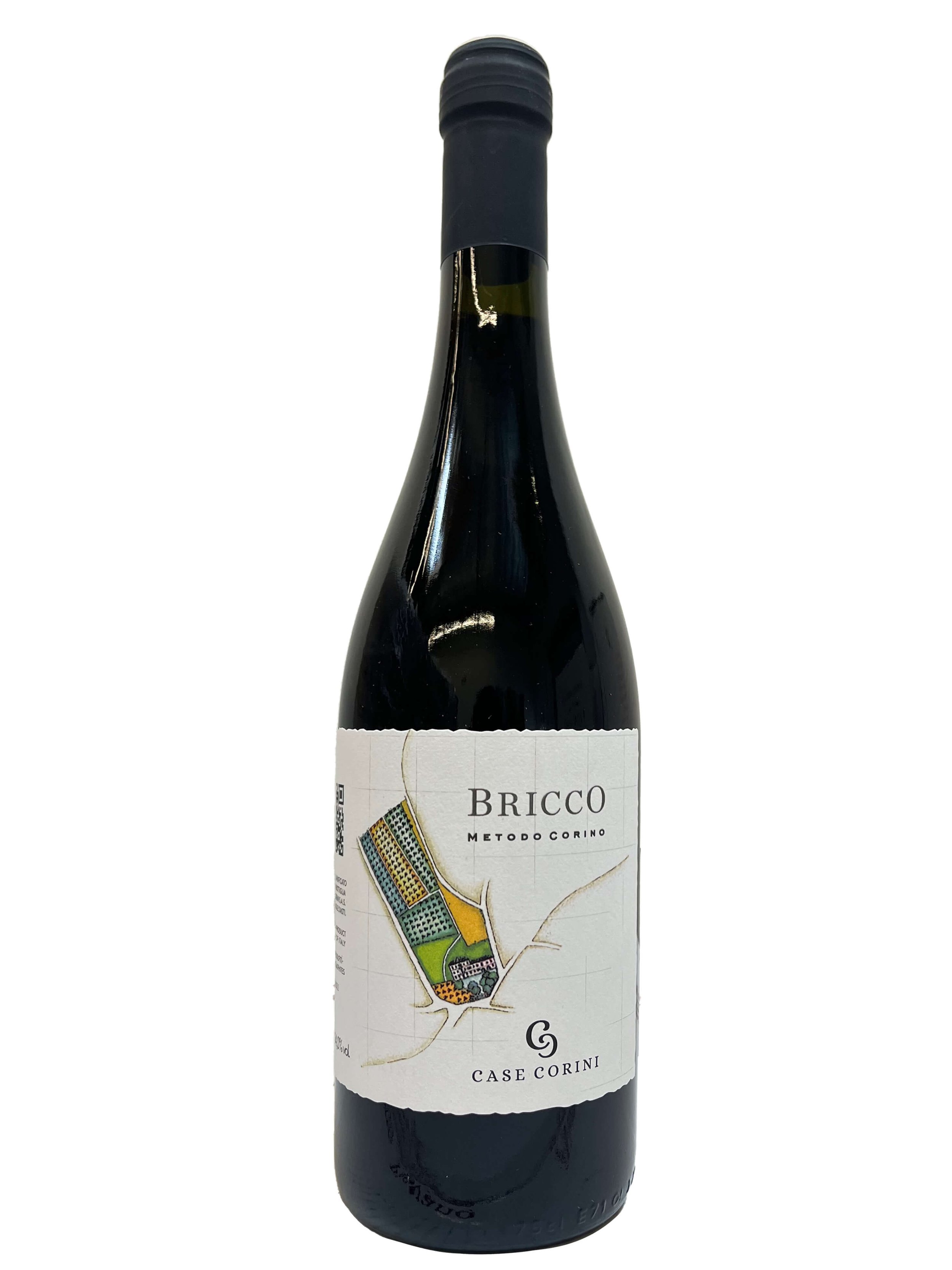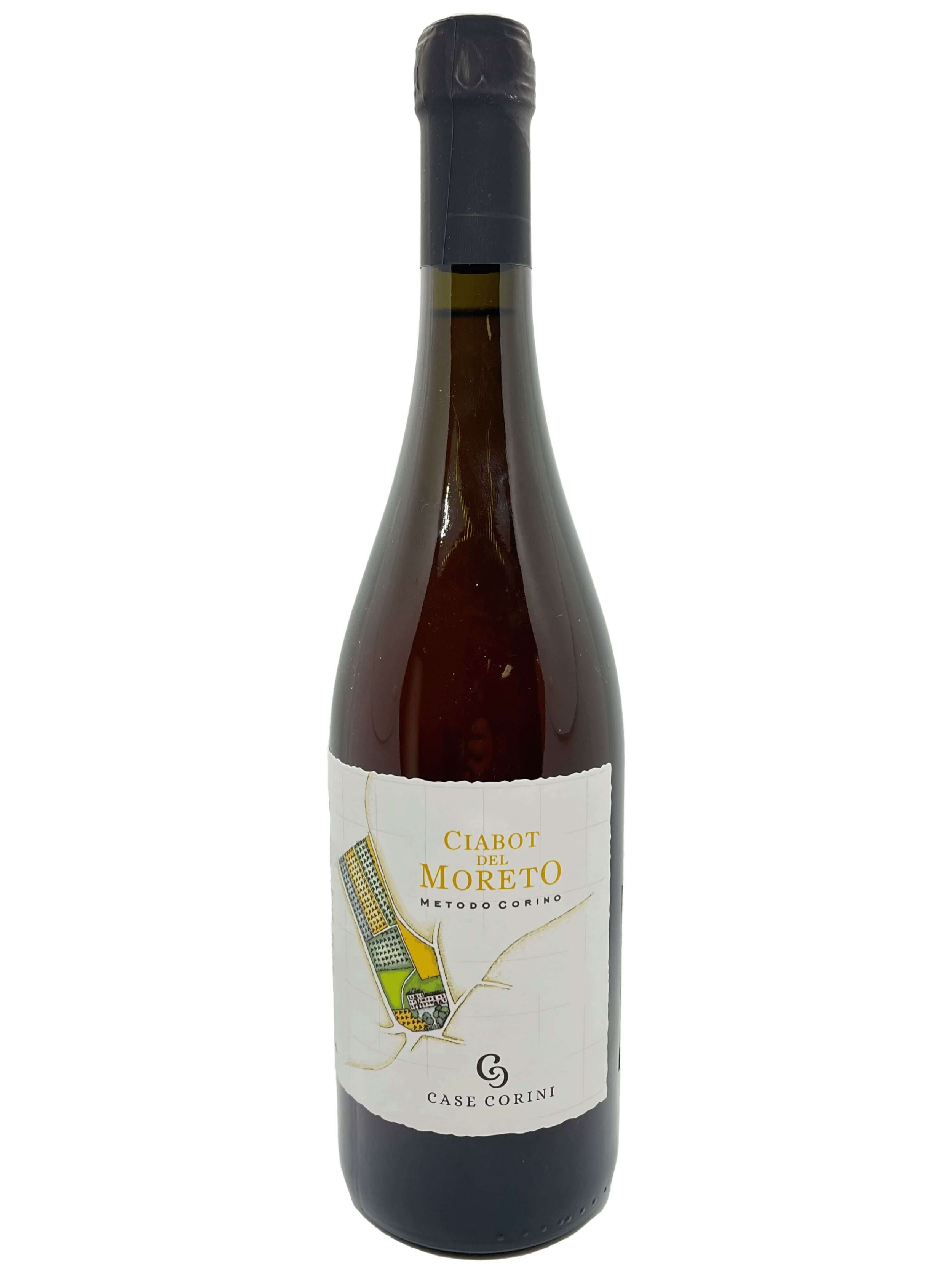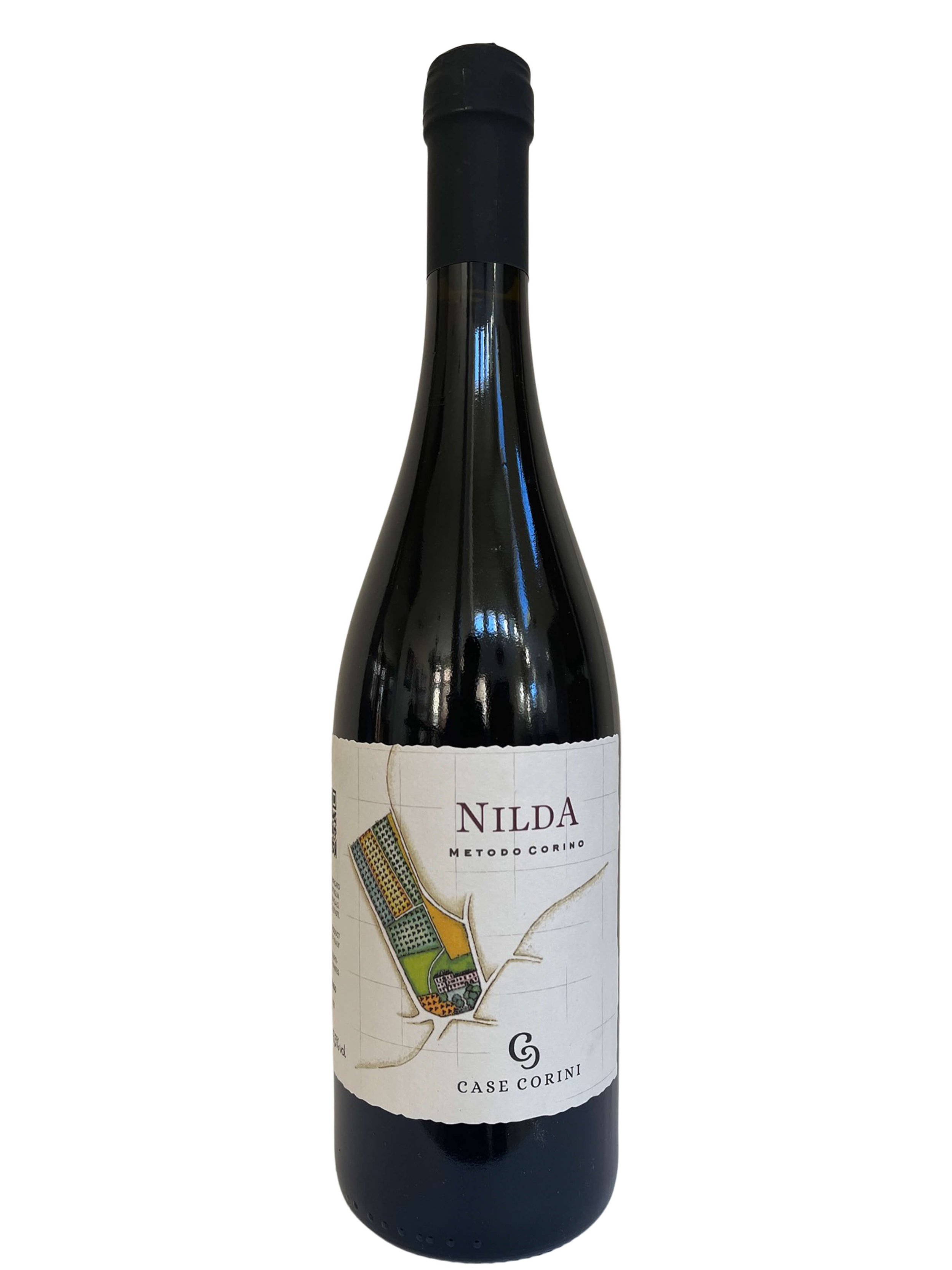No Wine Before Its Time
By now you know that we seek out small producers that respect nature and try to minimize the interventions in the vineyard and cellar. Case Corini is the epitome of this winegrowing philosophy, whereby they don’t add anything to their wine, not even sulphites, so their wines are alive and reflects Mother Nature at its maximum extent.
As we discussed in our previous article about what is a vintage in wine, the concepts of natural wine and vintage variations are well matched. Both have a similar goal of letting the wine explain the terroir and vineyard in the most explicit way possible. Therefore, it is only expected that we look at vintage variations through the lens of one of our natural wine producers: Case Corini.
Old vintages of Case Corini wines to be found in their cellars.
A biodynamic winery in the heart of Piedmont in Northern Italy, Case Corini has seen six generations of winemakers flow through its cellar walls. You may have already heard of one of the biggest propenents of natural wine and regenerative agriculture, Lorenzo Corino. Now helmed by siblings Guido and Luisa Corino, Case Corini boasts a unique philosophy that is a blend of traditional and unconventional methodology in the cellar and vineyards. While they follow the traditions of their family, what for six generations they have excelled at, those methods have have become different than conventional winemaking; Case Corini wines are sought after for just this.
With six different wines that come from five vineyards, the wines of Guido and Luisa are a fabulous way to explore the difference a vintage can have on wine.
Vintages of Case Corini
Like all natural and small production winemakers, Case Corini believes that crafting a vintage starts in the vineyard. A perfect combination of weather to make a great vintage for Case Corini is a “good spring, with a hot summer and a cool fall” says Guido. “Our objective is to reach a good complexity of sugars, fruit, and acidity. Every year we try to reach the peak of ripeness and complexity in the vineyard before harvest,” he continued. The foundational work in the vineyard, helped a great deal by the family’s generational dedication to soil management and regenerative agriculture, has many monkey wrenches thrown in by Mother Nature, but this is also part of the hallmark of wine vintages. Guido, for this reason, says he likes nebbiolo/barbera blends (like Achille): in vintages where one struggles, the other tends to thrive and so the two grapes balance each other out.
Of course, weather fluctuates. One year is never really the same as the last or previous years… similar maybe, but never the same. Guido however recognizes benefits of their farming practices based on regenerative agriculture and reliance on old vines, saying: “if we consider a time frame of approximately 10 years, the meteorological seasons of individual years can vary significantly and unevenly. This introduces a very important concept: that the vineyard is subject to very different climatic conditions from year to year, but it is still able to adapt and survive.”
One of these climatic variations (the R in our vintage formula from the previous article) is rain. In places like Piedmont where irrigation is frowned upon, this rain becomes crucial not only for a vine’s survival, but for the wine. Guido says that, “We are drinking the rain of [that year]. Wine is mostly water, and the vines combine the rain with the roots in a kind of mystic way, and this is the magic side of wine.” A pretty amazing way to reflect on wine vintages.
Once the work in the vineyard is done, and the grapes have been harvested at the best point allowed for the year, now the task for Case Corini becomes watching over the magic juice in the barrels. In line with their minimal intervention philosophy, they tend to play most with aging times, using a combination of previous experience with weather conditions to estimate how long a wine can potentially gain benefit from barrel aging. This is confirmed by regular tasting to check a wine’s progress, as they do not rely on lab analysis of their wines; rather they focus on their own palates and noses to determine what is best for a particular wine’s journey.
A 1967 barbera wine from Case Corini, the late Lorenzo Corino’s favorite vintage.
How does this philosophy translate into their aging wines?
First, Case Corini only releases a wine once it’s ready, even if it means aging for several additional years. When we were importing Case Corini wines for the first time in 2019, Lorenzo Corino, Guido’s father, mentioned the availability of Barla 2016. But when time came to make the order, Lorenzo decided that more time was needed, so we waited until 2021 to import this wines. This philosophy is reminiscent of the wine TV commercials from the late 70’s touting: ‘We will sell no wine before its time.’
Also, Case Corini does not release their wine vintages linearly. A 2018 might be bottled and sold while 2017 is still hanging out in the barrel. This is because Guido believes their wines need time in the barrel to mature. In good years, where acidity, fruit, tannins, and sugar are well balanced, this might mean up to or over four years (like a Barolo). This is because, as Guido explains, once bottled, the wine can breathe only through the small cork, but when in the barrel it has a lot more opportunity to breathe and thus grow. In good years, they want this growth to develop, but in less good years, maybe it can’t, so they can bottle earlier. So when a year is less than optimal, Case Corini may decide to release the vintage earlier than another vintage from a better year.
But what do these last few years look like? Before going into these “nature wines”, let’s just quickly refresh our Vintage Formula: T+S+R=V [Temperature + Sun + Rain = Vintage].
2016
A good vintage, not quite perfect, but the basic elements were present. Rain was good, but early on, with moderate temperatures, and then hot days and cool evenings in the fall. This all led to a balanced vintage, with harvest producing a good compromise between quality and quantity.
2017
This vintage was very hot. A dry year, the summer (especially August) was very hot and the vines experience a reduced quantity of rain, leading to grapes with very concentrated flavors. While 2011 was very similar, the rain in previous seasons were very different between the two. 2011 had the benefit of being a lone hot/dry year, preceded by rainy years, leading to the vines having a good store of water in their roots and in the soil. 2017, by contrast, was a hot year following other relatively hot years. While 2016 was near perfect, it didn’t have the rainfall necessary to set 2017 up for a spectacular vintage. This resulted in wines that have more accentuated and concentrated fruit & flavors, sorta like a ‘bold red’ that many Napa wine drinkers like. For future Case Corini wines, Guido noted that he sees the 2022 vintage coming along in a similar manner to these wines.
2018
This year was rainy and cool. This led to a high quantity harvest, with fruit that was less concentrated than usual. Think of 2018 as the antithesis of 2017. For those that prefer more subtly in wine, trading off less fruit flavor for more structure, the 2017 Case Corini wines would be more your style compared to 2018.
The 2022 vintage of Barla, still resting in the barrel, not quite ready for release.
2019
A cool year, the spring was wet and moist, which helped vine production a lot, although lower yields compared to 2018. The jury is still out on how this vintage compares to the others. Early conclusions are that the 2019 wines are fresh and fruity, so balanced yet ageworthy. Over the summer, we imported in several Case Corini 2019 vintages that were released this year, so try them out for yourself and let us know!
2020
It may be difficult to remember the weather during 2020 as we were forced to be inside for so much of it. However, the spring in Costigliole d’Asti started out well and promising. It was during flowering and fruitset, when the vines bloom and the flower turn into baby grapes, that the year turned south. Flowers fell, and the problems persisted throughout the season resulting in a greatly reduced harvest that was lacking of its usual qualities. Overall, the vintage turned out fresh, young drinking wines that should be enjoyed right away. The only exception to all of this is the moscato, Ciabot del Moreto; the orange skin-maceration moscato wine was unaffected in the vineyard, and instead shows great potential and quality in the bottle and during aging.
2021
After a lackluster 2020, the 2021 vintage more than made up for it, with Guido defining the vintage as “Excellent in both quality and quantity.” The first red wines are just now ready for release, and they are showing classic features, typical of their varieties and vineyards. While the weather was warm during the season, there were bouts of cooler moments that happened at key moments allowing for a good, healthy harvest.
2022
2022 saw a record heatwave hit most of Europe, Italy and Piedmont included. Between a dry and not too cold or snowy winter, those record temperatures that started as early as spring, and nearly no rainfall whatsoever, the area saw close to drought conditions. However, thanks to good soil management, overall Case Corini did not see devastating effects. While flatter vineyards, or those without good exposure did suffer a little, in general the vineyards produce good quality fruit, just on a small scale (production was down). Guido believes this will be an interesting vintage to compare as a late harvest style wine, or to keep back for long aging.
2023
In a rare pattern, 2023 seemed to be a carbon copy of 2022, with the dry and hot weather; however, this year the drought was not new. In the second consecutive drought condition season, the vineyards began to show the strain. Despite heavy covercropping (a regenerative agriculture technique staple of the Case Corini vineyards) protecting the soils and keeping in what little moisture there was, even the less sunny vineyards experienced a lot of stress. This caused problems in the harvest where some vines could not simply ripen its fruit fully. While the wines are still aging and not ready for bottling, some potential and quality is coming through. It’s not for certain yet, however, the vintage does indeed seem to hold promise.
Barla: A Year by Year Flight Tasting
Now that we have looked at a few specific years of weather and harvest patterns for Case Corini; let’s look at how this translated into one of their wines: Barla. During a recent visit with the Corino siblings, we had the exclusive opportunity to taste four vintages of Barla with them, discussing not only the vintage differences, but the potential causes and how this will affect the age-worthiness of the wine.
Barla is one of the gems of the Case Corini portfolio. An old vine Barbera wine, the vines are some of the oldest of the family, dating back to planting between 1925-1928. We currently have 3 vintages of Barla: 2016, 2017, and 2018.
2018: According to Guido, this year did not have the perfect weather conditions: the heavy rains caused the productive barbera vine to produce a larger quantity than normal, leading to a wine not as full-bodied as usual. However, it is still well balanced between the acidity and fruit, with deep jammy balsamic notes coming through in the glass. Here, the extra rain created a nice fruity wine that is not to strong; a more of an easy sipper than typical Barlas. And what this allows is for the typical characteristics of a Barbera wine to shine through with a balanced acidity and the jammy fruits.
2017: This hot year produced a wine that came out almost like a very young late harvest. A lot like 2011, the vines produced a very small production of super concentrated grapes. Because Barbera is known for it’s high acidity, the extra sugars produced by this concentration only helped to balance the wine. However, you can taste a slight amount of residual sugar on the palate, but like we said, thanks the the natural acidity in barbera, this added sweetness is pleasant and well balanced. Guido believes this wine can easily age for 10 years no problem; he thinks its sweet spot and peak will be around 2027.
Barla, through the years.
2016: Guido’s favorite vintage of the lineup that day, this vintage is well balanced. After four years in the barrels, Guido described it as a “perfect project”. With less residual sugar, it is slightly more lean and less chewy than the 2017. This is replaced with a nice complexity that translates into an easy to drink wine that is less of a mouthful. The sweetness you feel here is from grapes that were just right at the time of harvest. This 2016 is perfect to drink now: it is ready for maximum enjoyment.
2011: An important wine for Case Corini, this 2011 represents their relationship with the past. Sister Luisa Corino’s favorite vintage, she picked it specially for this tasting to share with us. Even after 12 years, this is a fabulous wine and lives as a delicious testament to the longevity and ageability of Case Corini wines. As well, Guido thinks it shows us a little window into the potential future of the 2017 vintage (for those that can resist the wait). This was one of the first really hot years in a while, really since 2003. While at the time it was unusually hot and dry, most years are presenting weather like 2011 now; the issue with this is what we alluded to above, 2011 had a good history of prior rainy years where now with one hot dry year after another water is becoming more of a scarcity. This 2011 wine, however, represents itself as a meditation wine. Luisa says a bottle can remain open for two months in her home, with them just enjoying little sips now and again to savor. Round, soft, and enveloping, there are notes that remind one of a passito liquor wine, but without the alcohol usually associated with such wines. A pretty unique vintage, Guido says they are honestly still waiting to see another year like this.
Taste the Rain with Case Corini Natural Wines
If you want to taste some Case Corini vintages for yourself, you are in luck! Vero offers three of Case Corini’s 00 natural wines in several vintages: Achille, Centin and Barla. Recreate the vertical tasting we did with Guido and Luisa Corino in our YouTube Wine Tasting with Barla, available from the years of 2016, 2017 and 2018. Or, branch out on your own and try to find the vintage variations within Centin, an all Nebbiolo wine in the years of 2016, 2017, and 2018 as well. Lastly, taste the classic blend of nebbiolo and barbera in Achille, and see how the two grapes interacted and balanced each other in the years of 2017, 2018, and 2019. Or try instead the same vintage of different wines of theirs and formulate your own opinion of each vintage. Let us know in the comments below if can you spot the vintage variations in the Case Corini wines from the 2016 - 2019.
Enjoying the vertical flight tasting with Guido Corino (left) and Luisa Corino (right).
For those of you that know our curation style know that we love to compare and contrast vintages. Try a selection of different vintages and different winegrowers from our portfolio. We sell to both businesses and consumers across the US:
We are enlarging our network of distributors around the country. Reach out to us if you are interested in distributing our wines.
We sell to wine stores and restaurants in certain states - contact us if you would like more info.
We do corporate gifts and sommelier guided wine tastings. Email us and we’ll tailor unique and sustainable corporate gift ideas.
If our farm crafted wines and olive oils are not in your local shop or restaurant buy wine online here and we’ll ship it to you. Browse the VeroShop to find some great small production wines and try their various vintages.
We also have a wine club for true wine explorers seeking to discover a unique and authentic small production wine they never had - plus it has won an award for Best Wine Club!











